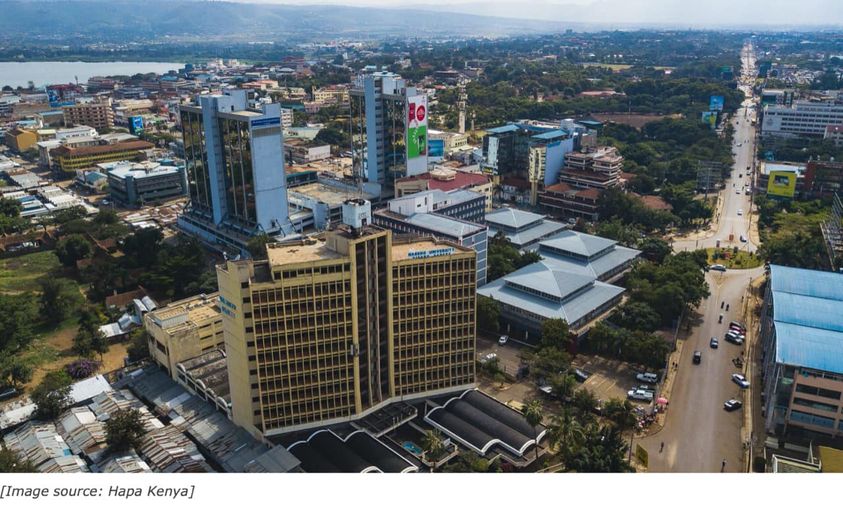Share this
By Nobert Nyandire
The County Government of Kisumu recently announced plans to relocate two of the county’s oldest schools from the city centre to pave way for the expansion of the CBD.
I want to address the issue surrounding the relocation of Kisumu Boys and Girls High Schools from a Planning perspective, What Kisumu City is Experiencing is a case of Urban Regeneration or Renewal and It’s not a new Phenomenon, although gentrification can also not be ruled out.
Urban Regeneration is an action aimed to solve urban problems and finding long-term improvements to the economic, physical, social and environmental aspects of an area to be changed. But must adhere to the following principles:
- The need to establish clear and measurable objectives of urban regeneration process and according with the objectives of sustainable development;
- Adequate analysis of local conditions;
- The need of the efficiently use of natural, economic and human available resources;
- Participation and cooperation among stakeholders, leading to improved physical condition of buildings, social structure, economic base and environmental conditions.
Urban regeneration is an opportunity in solving problems such as: Lack of identity of a residential area, total lack of public spaces and the high urban density, which makes it impossible the widening of roads, green or recreational areas, planting trees along the sidewalks etc
Earlier in the days, 2 planning protagonists in the name of Perroux and Friedmann explained this using the Growth Pole and Core Periphery Model in Planning respectively. For now allow me to explain John Friedmanns’ Core periphery Model. Friedmann believed that a city has four regions;
- The core region(Kisumu CBD and Its Surroundings), which is characterized by high potential for economic growth. They will consist of one or more clustered cities together with their intermediate surroundings.
- The upward transitional region(Milimani, Mamboleo, Kanyakwar, Kibos etc), are located favorably relative to the core regions and have a capacity for intensified use of resources. A salient characteristic is that they are areas of net migration. Economic development possibilities will often be in response to a rising demand at the core.
- The downward transitional region,(Manyatta, Obunga, Nyalenda, Kondele etc) are areas that are old, long settled with stagnant essentially rural economies, characterized by net emigration.
- The resource frontier, are areas of new settlement, which are predominantly agricultural in nature. (Kibos, Koru, Chemelil, Muhoroni, Miwani, Ahero etc)
According to Friedmann, development originates in a center of change (Kisumu CBD) located at the points of highest potential interaction within a communication field. Innovations diffuse from those centers to areas of lower potential interaction. Which is what is being seen at the moment.
In Kenya currently, Counties are struggling to have in place their spatial plans, A spatial plan should be a component of the county integrated development plan (CIDP) that illustrates the social and economic development programme of the county, However most county governments develop CIDPs without including the Spatial Plans. The Council of Governors and the National Government through the Ministry of Lands and Physical Planning, developed guidelines for county spatial planning in 2017. Yet, until last year, only Lamu County had developed a spatial plan.
Nonetheless, Kisumu County also drafted a new urban spatial, physical and land use development plan in November 2020 to help manage its growth. The plan aims to guide, regulate and coordinate the development of new infrastructure in the city, including new bus parks, drive and walk ways, housing, tourism, land use and public service for the next 20 years. The plan also entails a framework to accommodate new growth and development of existing growth nodes.
By law, no development can or should take place outside a planning framework. Therefore no public fund should be used outside a planning framework. CIDPs, which most counties use, are not Spatial Plans and as such the relocation of some of the amenities in Kisumu should not be undertaken unless a clear spatial or urban plan is in place to guide the such developments, As it stands, The County government is clear on its priorities as set out in the land use development plan for the County.
Besides the urban spatial, physical and land use development plan, Kisumu also drafted The Kisumu Sustainable Mobility Plan (KSMP) in June 2020 which aims to foster increased accessibility by prioritizing walking, cycling, and public transport. The Plan first assesses conditions of the existing transport system, identify existing gaps in transport facilities and service provision. It then offers a roadmap for improved mobility and living conditions to maximise the contribution of transport to improving the city’s quality of life. It also addresses the need for orderly urban expansion and enhanced connectivity between Kisumu and surrounding rural centres.
The KSMP comes under the umbrella of the Kisumu Integrated Sustainable Urban Plan (ISUD), which identifies mobility as one of the essential keystones towards the growth of the city. The plan recommends prioritisation of efficient public transport and enhanced mobility through road design incentives. The KSMP is also guided by the Governor’s manifesto (2017-2022), which highlights the need to integrate and improve various modes of transport to foster the development of Kisumu county.
I am not a Devil’s advocate but if the Mobility plan for the county is an essential keystone towards the growth of the city, then such monumental amenities like Kisumu Boys and Girls might not withstand the test of time(Noise, Urbanization, Dust, Smoke, Crime etc) and perhaps their reallocation might prove to be beneficial in the long run. However, the county needs to uphold one of the principles of Urban Regeneration, that of “Participation and cooperation among stakeholders” In order to achieve success.
Nobert Nyandire is an Environmental Planner and Climate Change Expert.





